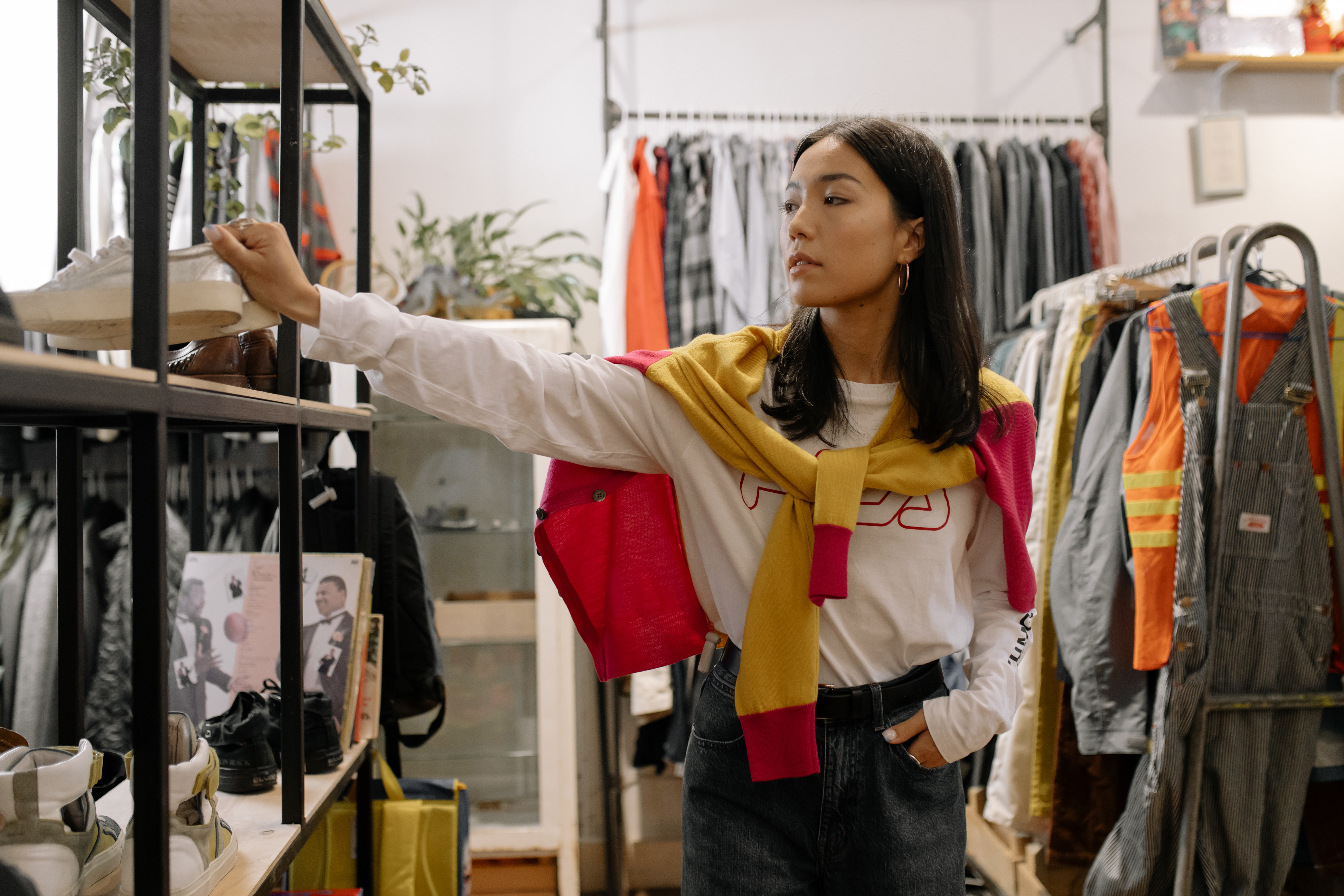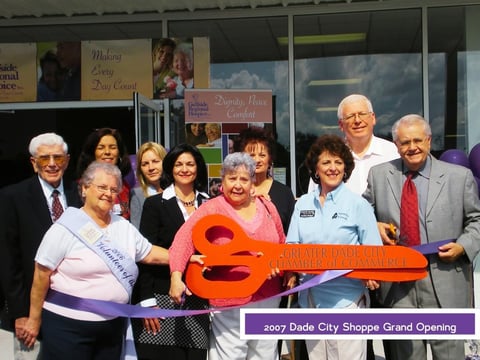6 min read
Good deals for an even greater cause: The History of Thrift Shops
By: Linda Ward on August 17, 2023 at 10:24 AM

Thrifting has become a cultural phenomenon, with thrift stores serving as treasure troves of unique finds and budget-friendly fashion. But did you know that the history of thrift stores stretches back centuries and is deeply rooted in economic, social, and environmental factors? In this blog, we will take a journey through time to explore the intriguing history of thrift stores, tracing their evolution from humble beginnings to their present-day popularity.
Origins in Charity and Social Reform (19th Century)
The roots of thrift stores can be traced back to the 19th century when the Industrial Revolution brought about significant societal changes. The emergence of factory work led to increased urbanization, leaving many people displaced and struggling to make ends meet. Charitable organizations, inspired by principles of social reform, established early forms of thrift stores to provide clothing and essential goods to the less fortunate.
World Wars and Economic Necessity (20th Century)
The 20th century brought two world wars and economic hardships, further propelling the thrift store movement. During these challenging times, the shops gained momentum to conserve resources and support war efforts. Citizens were encouraged to donate clothing, household items, and other goods to thrift stores, helping both soldiers and civilians while also promoting frugality.
Rise of Vintage and Counterculture (1960s-70s)
The 1960s and 70s marked a significant shift in the perception of thrift stores. The counterculture movement embraced individualism and rejected mass consumerism, making second-hand stores a hotspot for unique, retro fashion finds. Thrift stores became synonymous with self-expression, as young people sought out clothing and accessories that stood out from mainstream trends.
Sustainability and Environmental Awareness (1980s-2000s)
As concerns about environmental sustainability grew, thrift stores gained renewed significance. The idea of reusing and recycling perfectly fits the ethos of reducing waste and conserving resources. By shopping at thrift stores, consumers could participate in the sustainable fashion movement while also saving money. This era also saw the rise of "vintage" as a trendy and desirable fashion style.
Mainstream Popularity and Designer Collaborations (21st Century)
In recent years, thrift shopping has transcended its niche status and entered the mainstream. Celebrities, influencers, and even luxury designers have embraced thrifted fashion, contributing to the broader acceptance of second-hand shopping. Thrift stores have also become popular destinations for millennials and Gen Z, who are drawn to the unique and sustainable aspects of thrifted clothing.

Gulfside’s Longstanding History in the Thrifting Industry
Gulfside Hospice started caring for patients in the summer of 1989, and shortly thereafter, the first Gulfside Hospice Thrift Shoppe was opened in New Port Richey in the spring of 1992. With the addition of this new store, Gulfside was able to ensure that no patient was ever turned away due to insufficient funds, simultaneously helping serve its mission to treat patients with the greatest comfort and peace of mind. As the New Port Richey store outgrew location after location, Gulfside opened a Zephyrhills Thrift Shoppe to better serve the east side of the county in late 2001. The business as a whole saw immense success and growth in Pasco County, bringing more so of a reason to open two new stores in Hudson and Dade City in 2003 and 2007, respectively.
The Gulfside Hospice Thrift Shoppes are almost primarily run by community volunteers, and exclusively sell products that have been donated by the community. These factors allow the Shoppes to keep their operating costs low, which in turn means that even more of the funds raised can be used to directly support patients in need, right in the local community.
The Gulfside Hospice Thrift Shoppes are a perfect hunting ground for shoppers looking for a bargain, antique collectors looking for a unique find, families looking for inexpensive clothing and home goods, crafters looking for the perfect DIY (do it yourself) project piece, and so much more. Thanks to a constant flow of donations, inventory changes daily and you never know what you might find at the Shoppes!
Keeping up with Technology: Thrifting Online with Gulfside
With the effort and motivation to continue to expand and grow with the times, the Gulfside Hospice Thrift Shoppes has recently opened a new Online Shoppe where Gulfside’s loyal patrons can shop the same Gulfside goodies and treasures they have always loved from the comfort of their own home.
Each of the four locations regularly add unique items, antiques, collectibles and more to the Gulfside Hospice Online Thrift Shoppe. From antique dishes to autographed sportswear, the online collection is just as diverse as the items sitting on shelves in the brick-and-mortar Shoppes.
Shoppers can filter items by category and their favorite store for easy shopping and quick item pickup. And most importantly, the proceeds from the online purchases still go to supporting hospice patients in need.
To browse the new Gulfside Hospice Online Shoppe, visit shopgulfsidethrift.org.
The history of thrift stores and how Gulfside Hospice entered this market is a testament to the ever-evolving relationship between fashion, economics, and society. What began as a response to social challenges and economic hardships has blossomed into a global movement that celebrates individuality, sustainability, and the joy of discovery. As thrift stores continue to thrive in the modern world, their legacy serves as a reminder that fashion does not have to come at an inflated cost – both financially and environmentally. So, the next time you step into a Gulfside Hospice Thrift Shoppe and unearth a hidden gem, remember that you are contributing to a rich history that spans centuries and supporting a compelling cause in the community.
Related Posts
Creating a Memorable Experience At The Thrift Shoppes
It takes a village. Gulfside could not accomplish its mission without the hard work and dedication...
Gulfside Hospice Thrift Shoppes: Benefits of Thrift Shopping in Pasco County
For us, shopping is much more than keeping up with the latest trends or finding a new treasure to...
12 Reasons to Shop at the Gulfside Hospice Thrift Shoppes
- Great prices! The Gulfside Hospice Thrift Shoppes have the best prices in town on anything you’re...


